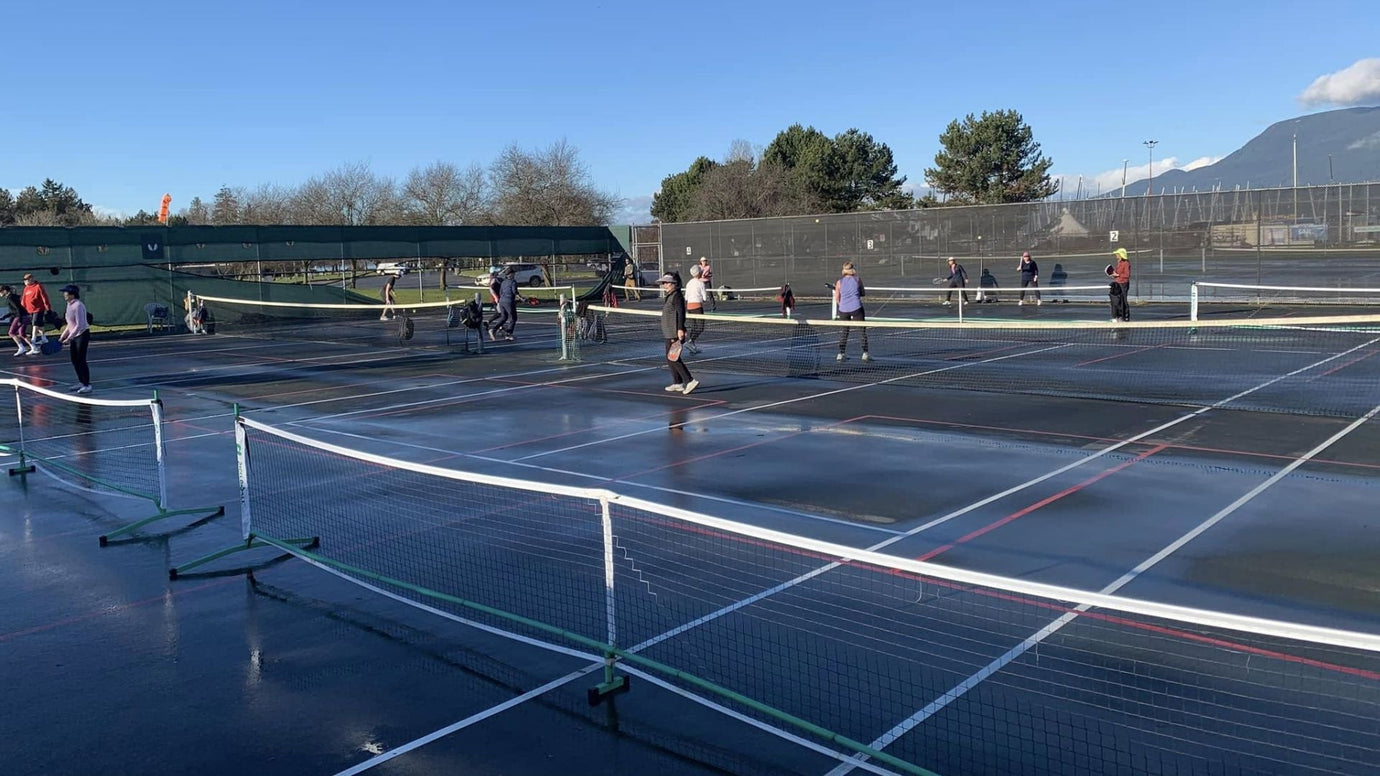Pickleball, a sport that combines elements of tennis, badminton, and table tennis, has been rapidly gaining popularity. As you delve into the game, you'll encounter unique terminology, and one of the most intriguing is the "kitchen." This area of the court is crucial to understanding pickleball strategy and rules. But why is it called the kitchen?
What is the Kitchen in Pickleball?
In pickleball, the "kitchen" refers to the non-volley zone (NVZ), a 7-foot area on each side of the net where players are not allowed to hit the ball out of the air (volley). This rule is in place to prevent players from dominating the net and smashing the ball down on their opponents, encouraging more strategic play and rallies.

Why the Peculiar Name?
The origin of the term "kitchen" is a bit of a mystery, with several theories circulating among pickleball enthusiasts:
- A Nod to Home: One popular theory suggests that the term comes from the idea of a kitchen in a home – a place where you're not supposed to linger or stand around idly. Just as you wouldn't stand in the middle of a busy kitchen, players are discouraged from staying in the non-volley zone.
- Borrowing from Other Sports: Some believe it might be a playful adaptation from other sports. For instance, in shuffleboard, there's a scoring area called the "kitchen." While the rules are different, the concept of a designated, restricted area might have influenced the naming.
- Humorous Intent: It's also possible that the founders of pickleball, Joel Pritchard, Bill Bell, and Barney McCallum, simply came up with a quirky, memorable name to add to the sport's unique charm. Given the sport's lighthearted origins, a humorous name like "the kitchen" fits right in.
Regardless of its exact origin, the "kitchen" is a fundamental part of pickleball, adding a strategic layer that differentiates it from other racket sports. Mastering play around the kitchen line is key to becoming a successful pickleball player.
Strategies for Playing the Kitchen
Playing effectively around the kitchen involves more than just avoiding stepping in it. Here are some strategies:
- Dinks: The dink shot is a soft shot that lands in the opponent's kitchen, forcing them to hit up on the ball. This is a primary offensive and defensive shot in pickleball.
- Volleying from the Line: While you can't volley in the kitchen, you can volley from behind the kitchen line. This allows you to aggressively attack balls that are hit high enough.
- Footwork: Quick and precise footwork is essential to move in and out of the kitchen area, ensuring you don't commit a fault by stepping into it during a volley.
FAQ (Frequently Asked Questions)
Q: What happens if you step in the kitchen in pickleball?
A: If a player steps on or into the non-volley zone (the kitchen) while volleying the ball, it is a fault. This means the rally ends, and the opposing team gets the point or the serve.
Q: Can you hit the ball in the kitchen in pickleball?
A: Yes, you can hit the ball in the kitchen, but only if the ball has bounced first. You cannot volley (hit the ball out of the air) while standing in the kitchen or on the kitchen line.
Q: What is the 7-foot rule in pickleball?
A: The 7-foot rule refers to the non-volley zone, or "kitchen," which extends 7 feet from the net on each side. Players are not allowed to volley the ball while standing in this 7-foot area.
Q: Why is the kitchen important in pickleball?
A: The kitchen is important because it prevents players from dominating the net with powerful volleys, promoting more strategic play, softer shots (dinks), and longer rallies. It adds a unique challenge and dynamic to the game.
Q: Can you run through the kitchen in pickleball?
A: Yes, you can run through the kitchen as long as you are not volleying the ball. For example, if a ball bounces in the kitchen, you can run into the kitchen to hit it after it bounces.







